Great Hindu Warrior Queen : Rani Durgavati of Gondwana
- FACT Museum
- Jun 13
- 7 min read
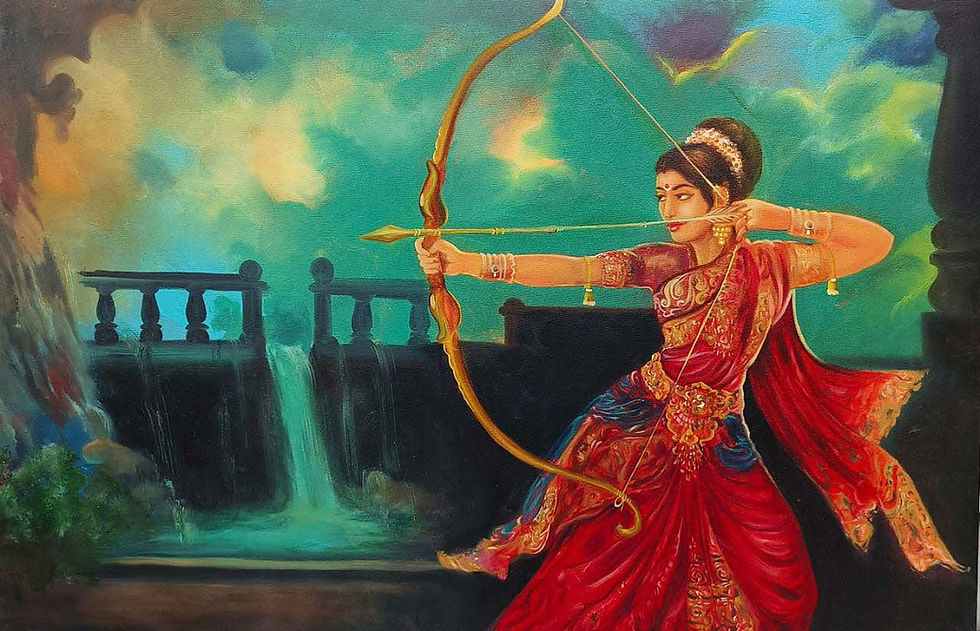
Introduction
Rani Durgavati was born on October 5, 1524 in the family of famous Rajput Chandel Emperor Keerat Rai. She was born at the fort of Kalanjar (Banda,UP). Chandel Dynasty is famous in the Indian History for the defense of king Vidyadhar ,who repulsed the Muslim attacks of Mahmud Ghaznavi. His love for sculptures is shown in the world famed temples of Khajuraho and Kalanjar fort.
Rani Durgavati’s achievements further enhanced the glory of her ancestral tradition of courage and patronage of arts In 1542, she was married to Dalpat Shah, the eldest son of king Sangram Shah of Gond Dynasty. Chandel and Gond dynasties got closer as a consequence of this marriage and that was the reason Keerat Rai got the help of Gonds and his son-in-law Dalpat Shah at the time of muslim invasion of Sher Shah Suri in which Sher Shah died.
Rani Durgavati took the rein of Gond dynasty
She gave birth to a son in 1545 A.D. who was named Vir Narayan. Dalpatshah died in about 1550 A.D. As Vir Narayan was too young at that time, Durgavati took the reins of the Gond kingdom in her hands. Two ministers Adhar Kayastha and Man Thakur helped the Rani in looking after the administration successfully and effectively. Rani moved her capital to Chauragarh in place of Singaurgarh. It was a fort of strategic importance situated on the Satpura hill range.
It is said that trade flourished during this period. Peole were prosperous. Like her husband’s predecessors she extended her territory and accomplished the political unification of Gondwana, also called Garha-Katanga, with courage, generosity and tact. Out of 23,000 villages in her kingdom 12,000 were directly managed by her government. Her large well equipped army is said to have consisted of 20,000 cavalry and 1,000 war elephants besides a good number of foot soldiers. Durgavati combined beauty and grace with courage and wisdom. She carried out many useful public works in different parts of her kingdom, winning the hearts of her people. She built a great reservoir close to Jabalpur, called Ranital. Following her initiative one of her attendants built Cherital and the Adhartal was built three miles from Jabalpur by her minister Adhar Kayastha. She is also reputed to have been a liberal patron of learning
Warrior Rani Durgavati
She distinguished herself as a warrior and fought with unvarying success against Baz Bahadur, the Sultan of Malwa. Stories of her exploits as a warrior and hunter are still current in area.
After the death of Shershah, Sujat Khan captured the Malwa zone and was succeeded by his son Baz Bahadur in 1556 A.D. After ascending to the throne, he attacked Rani Durgavati but the attack was repulsed with heavy losses to his army. This defeat effectively silenced Baz Bahadur and the victory brought name and fame for Rani Durgavati.
In the year 1562 Akbar vanquished the Malwa ruler Baj Bahadur and annexed the Malwa with Mughal dominion. Consequently, the state boundary of Rani touched the Mughal kingdom.
Rani’s contemporary Mughal Subedar was Abdul Mazid Khan, an ambitious man who vanquished Ramchandra, the ruler of Rewa. Prosperity of Rani Durgavati’s state lured him and he invaded Rani’s state after taking permission from Mughal emperor. This plan of Mughal invasion was the result of expansionism and imperialism of Akbar.
To fight a defensive battle, she went to Narrai situated between a hilly range on one side and two rivers Gaur and Narmada on the other side. It was an unequal battle with trained soldiers and modern weapons in multitude on one side and a few untrained soldiers with old weapons on the other side. Her Faujdar Arjun Daswas killed in the battle and Rani decided to lead the defence herself. As the enemy entered the valley, soldiers of Rani attacked them. Both sides lost some men but Rani was victorious in this battle. She chased the Mughal army and came out of the valley.
Choosing death to dishonor
At this stage Rani reviewed her strategy with her counselors. She wanted to attack the enemy in the night to enfeeble them but her lieutenants did not accept her suggestion. By next morning Asaf khan had summoned big guns. Rani rode on her elephant Sarman and came for the battle. Her son Vir Narayan also took part in this battle. He forced Mughal army to move back three times but at last he got wounded and had to retire to a safe place.
In the course of battle Rani also got injured near her ear with an arrow. Another arrow pierced her neck and she lost her consciousness. On regaining consciousness she perceived that defeat was imminent. Her Mahout advised her to leave the battlefield but she refused and took out her dagger and killed herself. Her martyrdom day (24th June 1564) is even today commemorated as “Balidan Diwas”.
Glory of Rani Durgavati
Rani Durgavati’s was a personality with varied facets. She was valiant, beautiful and brave and also a great leader with administrative skills. Her self-respect forced her to fight till death rather than surrender herself to her enemy.
She, like her ancestral dynasty, built so many lakes in her state and did a lot for the welfare of her people. She respected the scholars and extended her patronage to them. She welcomed the Vitthalnath of Vallabh community and took Diksha from him. She was secular and appointed many eminent Muslims on important posts.
The place where she sacrificed herself has always been a source of inspiration for freedom fighters.
In the year 1983, the Government of Madhya Pradesh renamed the University of Jabalpur as Rani Durgavati Vishwavidyalaya in her memory.
Government of India paid its tribute to the valiant Rani by issuing a postal-stamp commemorating her martyrdom, on 24th June 1988
Born on October 5, 1524 AD, Rani Durgavati hailed from the famous family of Chandel emperor Keerat Rai. She was married to Dalpat Shah, son of King Sangram Shah of Gondwana, in 1542. After her husband’s death in 1550, Rani Durgavati ascended the throne of Gondwana. She fought the Mughal army when they assaulted her realm and finally sacrificed her life on the battlefield on June 24, 1564. The day of her martyrdom is commemorated as ‘Balidan Diwas’.
On her death anniversary today, June 24, here’s a look at some of the facts about Rani Durgavati and her illustrious legacy:
Rani Durgavati was born in the Chandel dynasty which is famous for the valiant king Vidyadhar. Vidyadhar’s love for sculptures is displayed at the temples of Khajuraho and Kalanjar Fort.
The queen was named Durgavati as she was born on during the Hindu festival of Durgashtami, News18 reported.
Rani Durgavati gave birth to a son in 1545 AD. He was named Vir Narayan. After the premature death of Dalpatshah around 1550 AD, Rani Durgavati ascended the throne as her son Vir Narayan was too young.
When Durgavati took over the reins of the Gond kingdom, Adhar Bakhila, a prominent Gond advisor, helped her in the administration.
The Rani shifted her capital to Chauragarh from Singaurgarh. Chauragarh fort was of strategic importance as it was situated on the Satpura hill range.
The queen ruled for around 14 years (1550-1564). She was known for her military exploits, which included defeating Baz Bahadur.
In 1562, Akbar vanquished the Malwa ruler Baz Bahadur and annexed the territory, which shared its boundary with Rani’s kingdom. Akbar sent an expedition to conquer Gondwana in 1564 under the leadership of Asaf Khan. After conquering neighbouring kingdoms, Asaf Khan shifted his focus to Garha-Katanga. However, on hearing about Rani Durgavati gathering her forces, Asaf Khan halted at Damoh.
The brave queen repulsed three Mughal invasions. However, she lost many brave Gond and Rajput soldiers such as Kanut Kalyan Bakhila, Chakarman Kalchuri and Jahan Khan Dakit. Her army also suffered huge losses with the numbers falling from 2,000 to just 300 men, according to Akbarnama by Abul Fazl.
In her final battle, Rani Durgavati rode an elephant and was struck by an arrow in her neck. However, she bravely removed it and continued fighting. When she realised that defeat was imminent, she took out a dagger and stabbed herself to death. Rani Durgavati was a brave queen who chose death over dishonour.
In 1983, the University of Jabalpur was renamed Rani Durgavati Vishwavidyalaya in her memory by the government of Madhya Pradesh.
Commemorating her martyrdom, the Central government issued a postal-stamp on June 24, 1988, to pay tribute to the valiant queen.
Rani Durgavati, the Queen of Gondwana, is the notable icon of feminism in India. She was born in Uttar Pradesh to a Chandeli family. In 1542, she wedded Dalpat Shah, son of King Sangram Shah of the Gondwana Kingdom. Rani Durgavati ascended to the throne of Gondwana upon the death of her husband in 1550.
Rani drew her knife and murdered herself on the battlefield on June 24, 1564. This occurred after the Mughal army assaulted her realm, ensuring her downfall.
1. The queen was born on the auspicious Hindu festival of Durgashtami, which is why she was given the name Durgavati. With the assistance of Diwan Beohar Adhar Simha and Minister Man Thakur, Rani successfully governed the Gondwana Kingdom for 16 years.
4.The queen was well-trained in horseback riding, archery, and other sports, and she was well-known for her martial abilities.
5. Rani Durgavati is reputed to have been an outstanding hunter. When she heard a tiger had appeared, she didn’t drink any water until she shot him.
6. Rani Durgavati fought the army of Mughal Emperor Akbar and drove them out of her kingdom in the first battle.
7. During the last fight with the Mughal Army, Rani intended to assault the adversaries at night, but her lieutenants refused. The next day, Mughals arrived with massive weapons.
8. When her ministers mentioned the Mughal army’s might, Rani replied, “Better to die with dignity than live without self-respect. I have spent a long time serving my country, and at this point, I am not going to let it be tarnished. There is no other choice except to fight.”
Painting Briefs:
1. paint the fort of Kalanjar (Banda,UP) of Chandel Dynasty famous in for the defense of king Vidyadhar ,who repulsed Muslim attacks of Mahmud Ghaznavi.
2. Birth of Rani Durgavati was born on October 5, 1524. Show her with an aura around her head, in her mother’s arms, with female attandants around her and the king wiating at the door
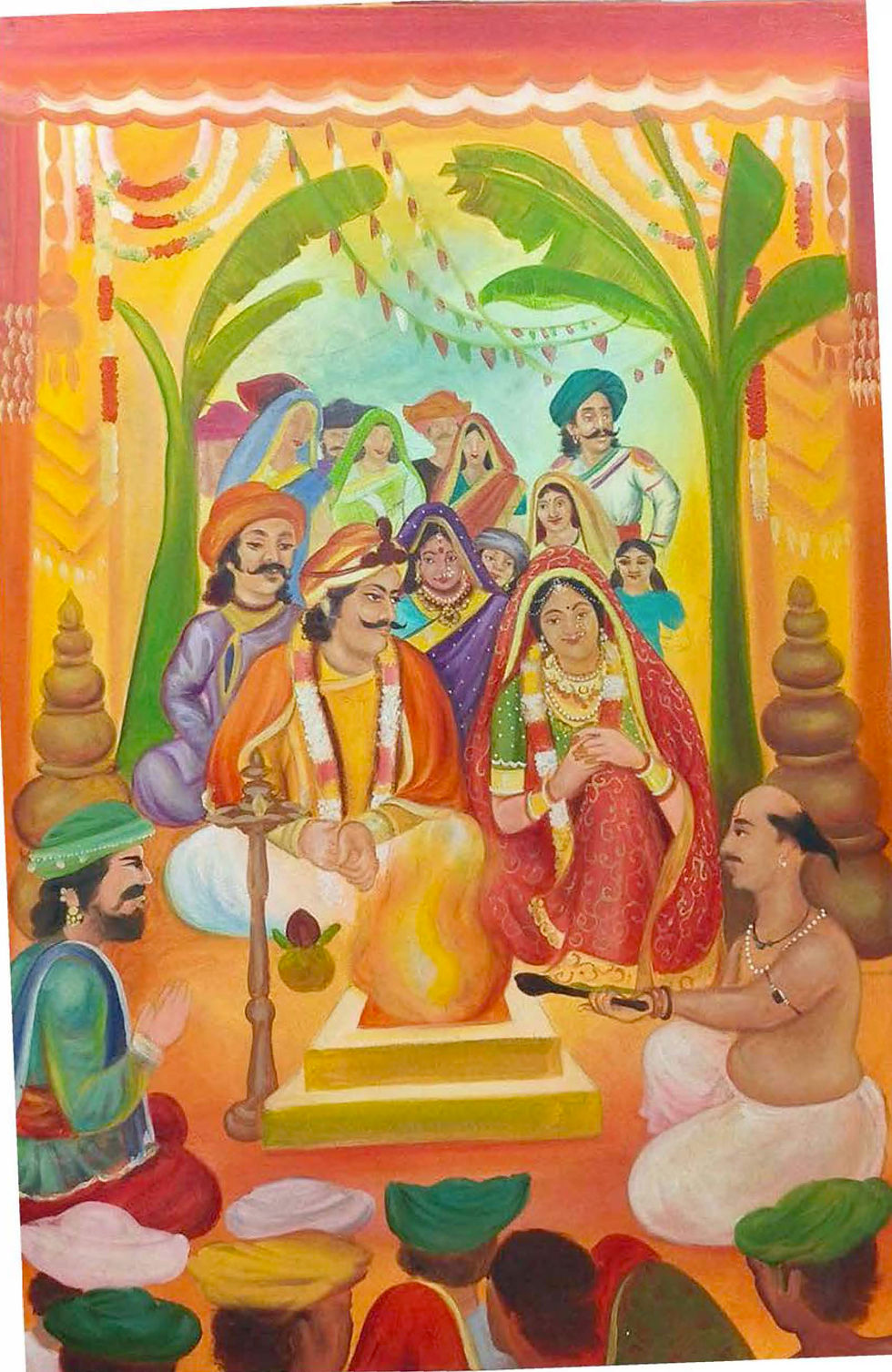
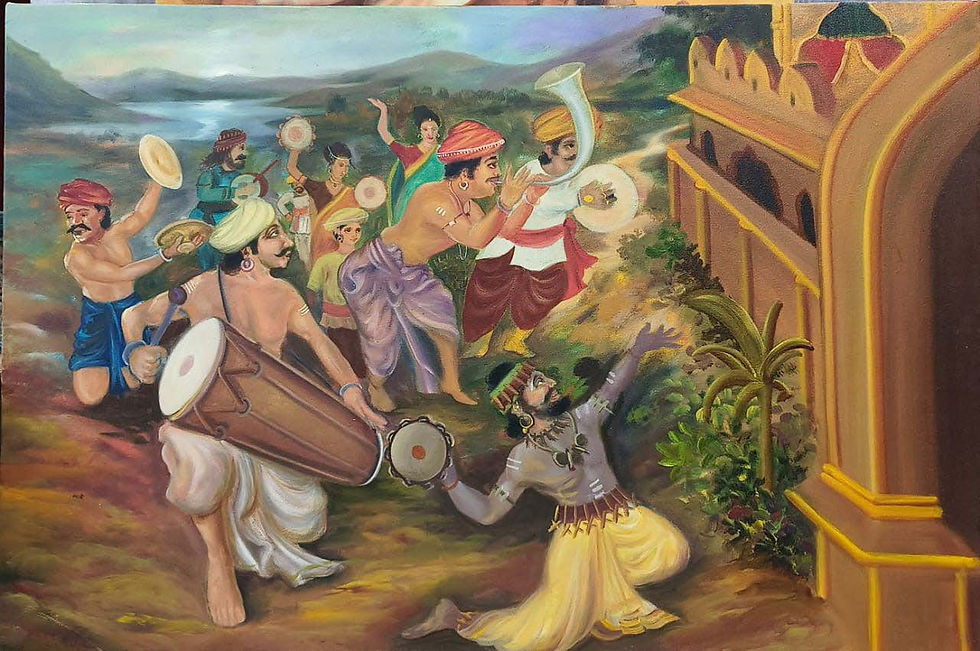
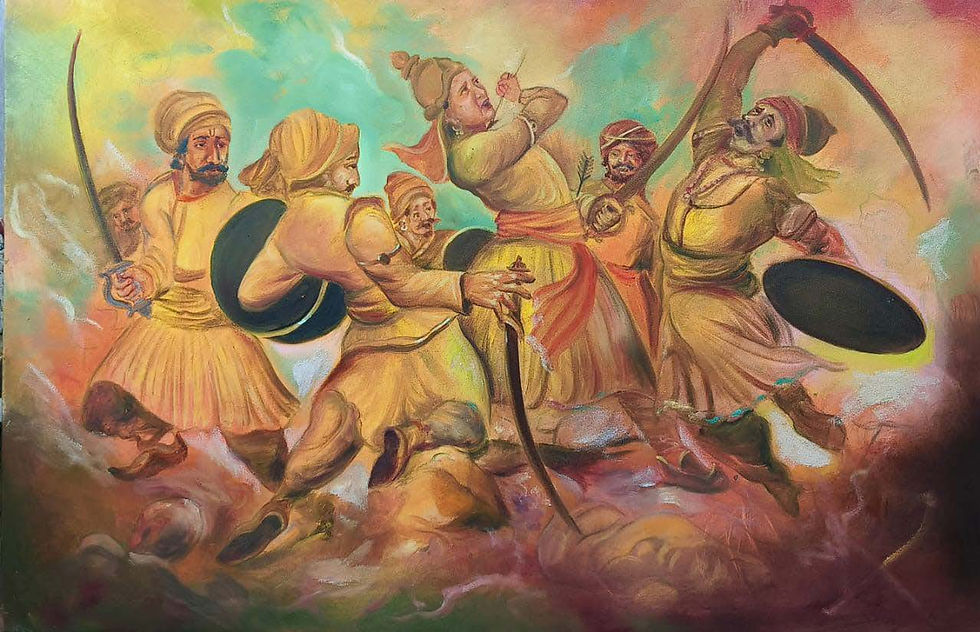

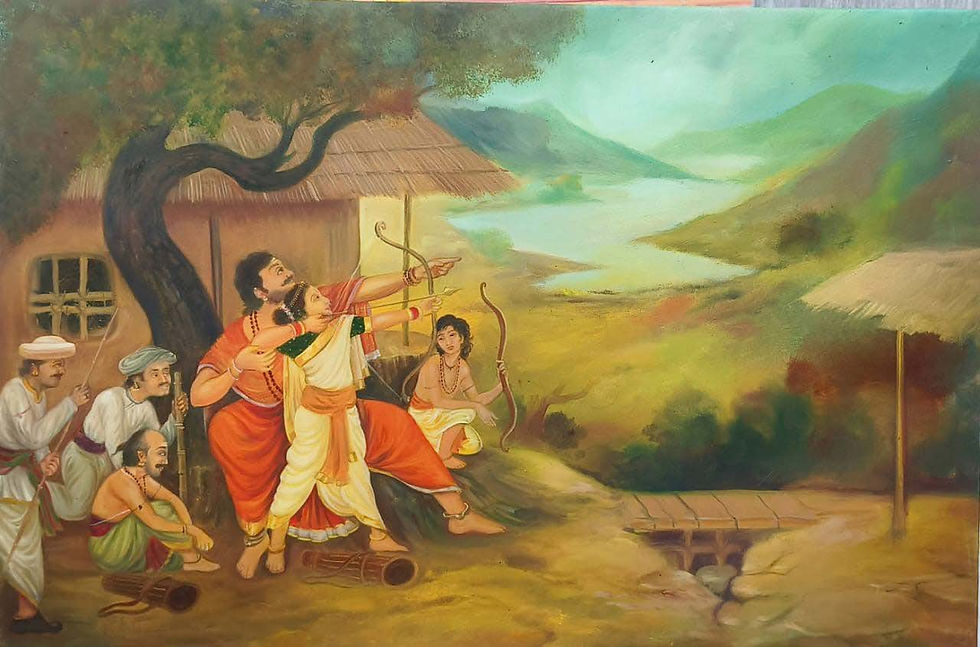
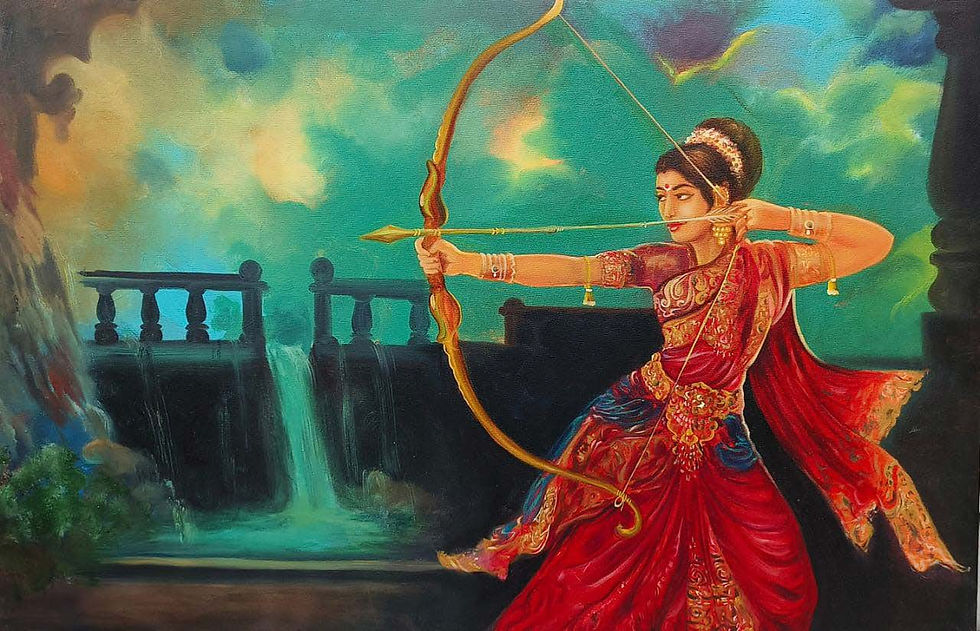

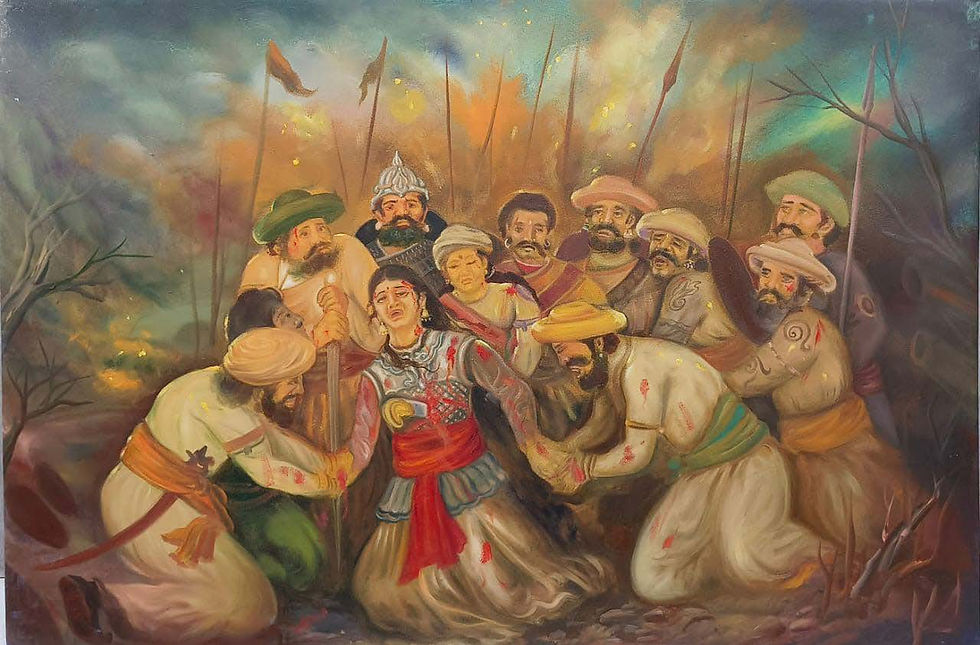

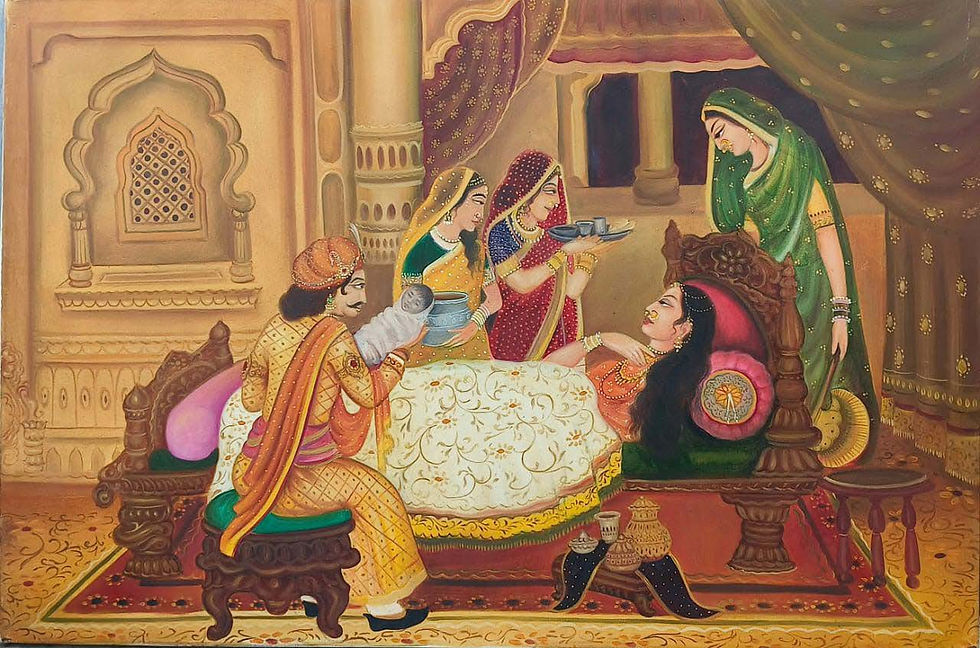
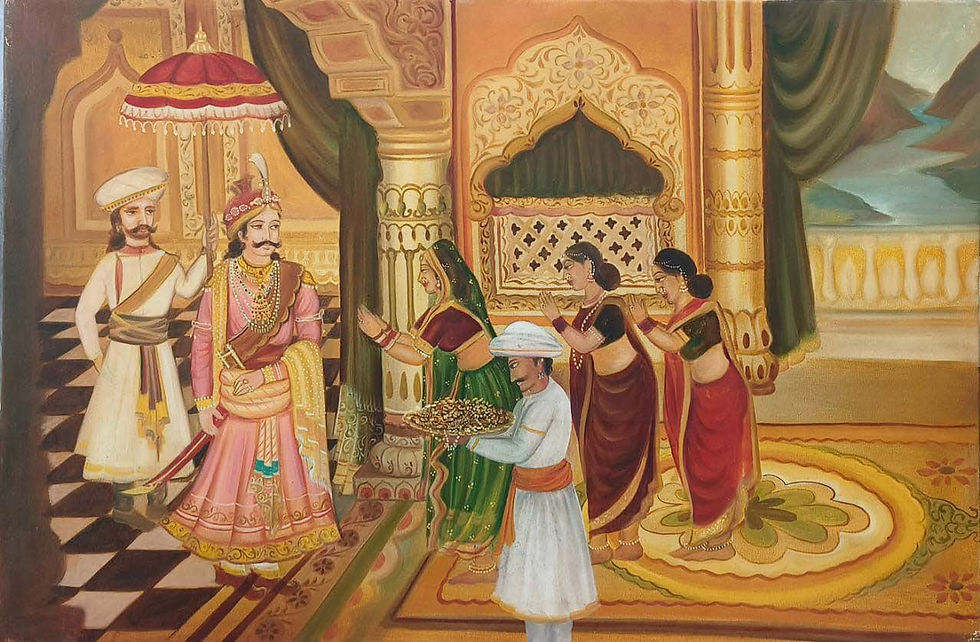
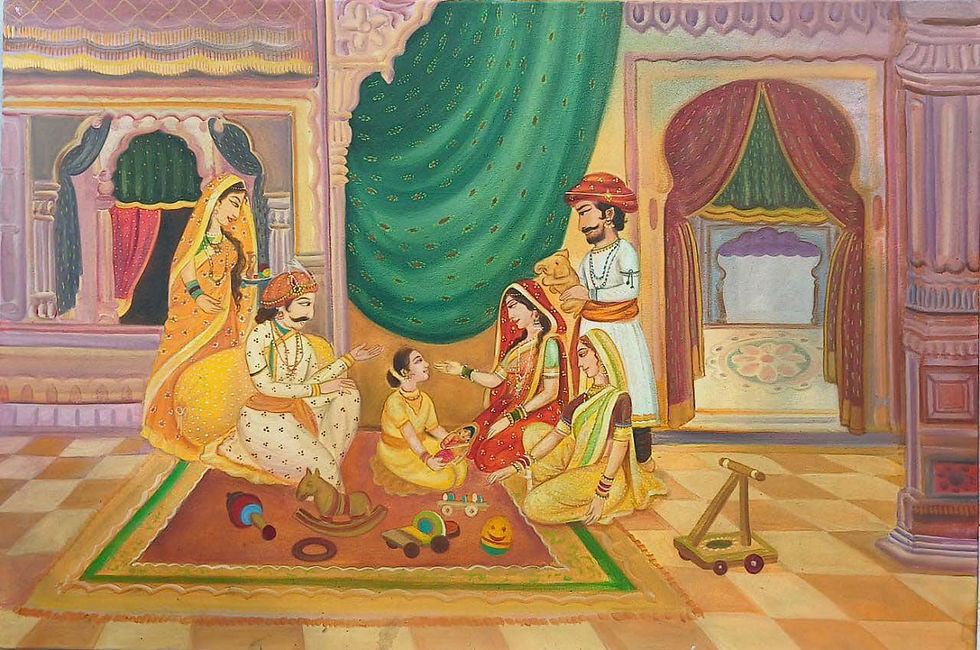



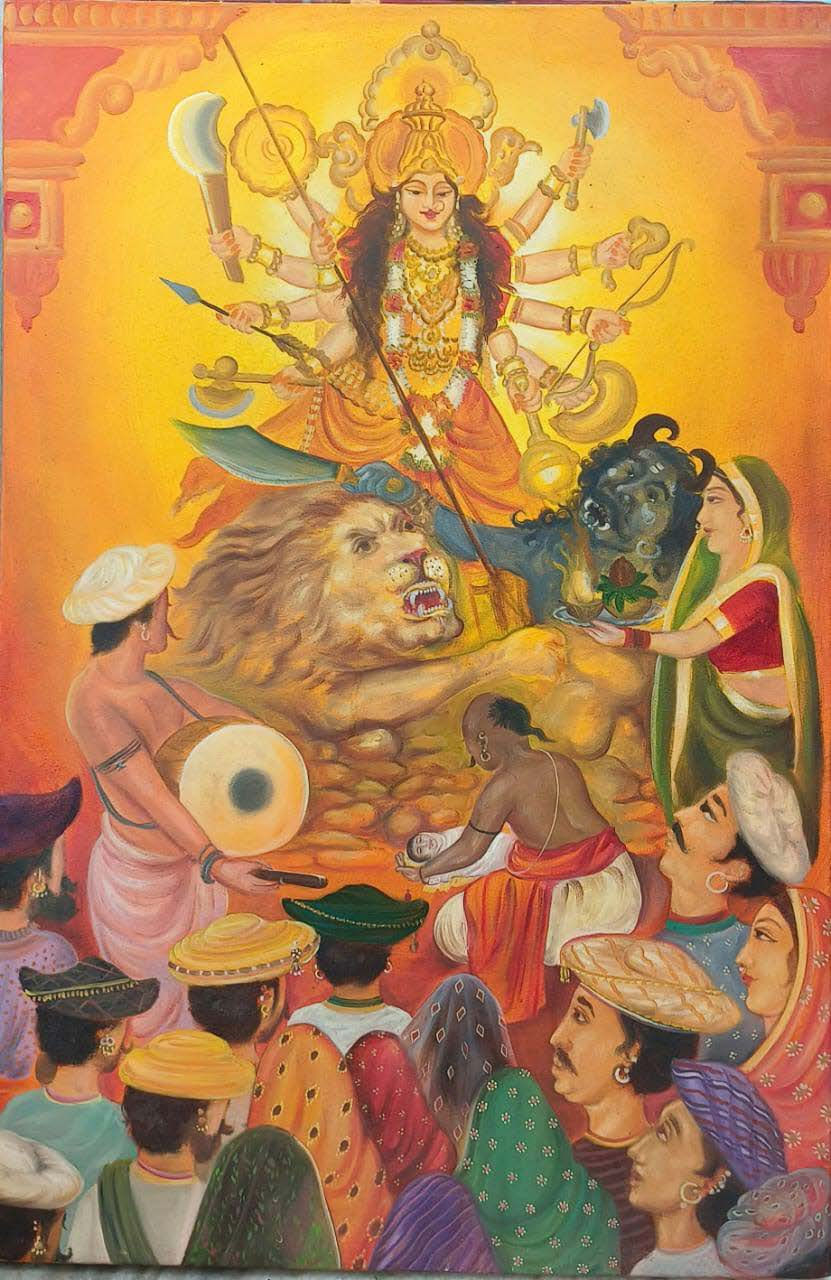
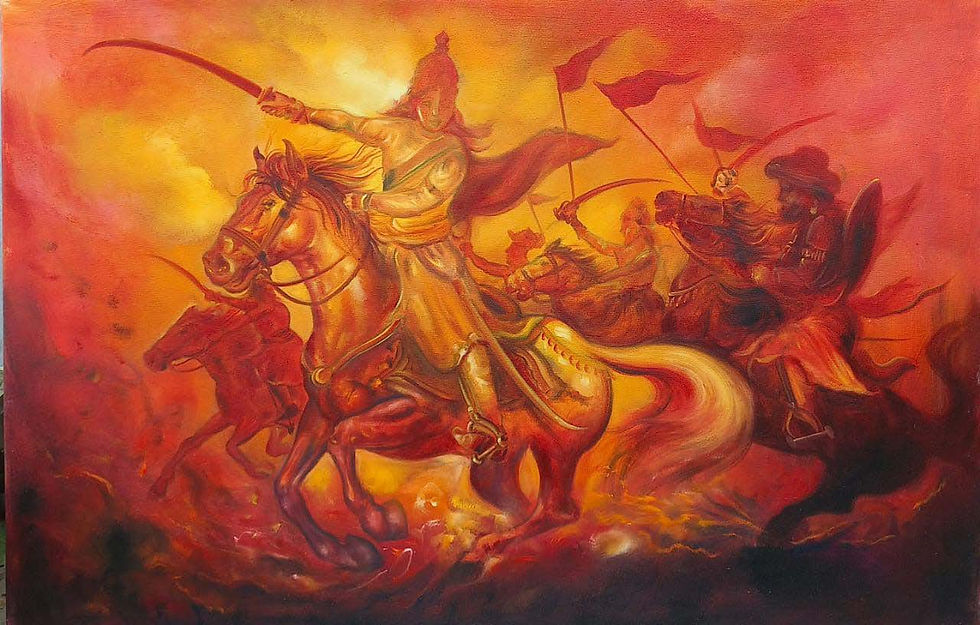

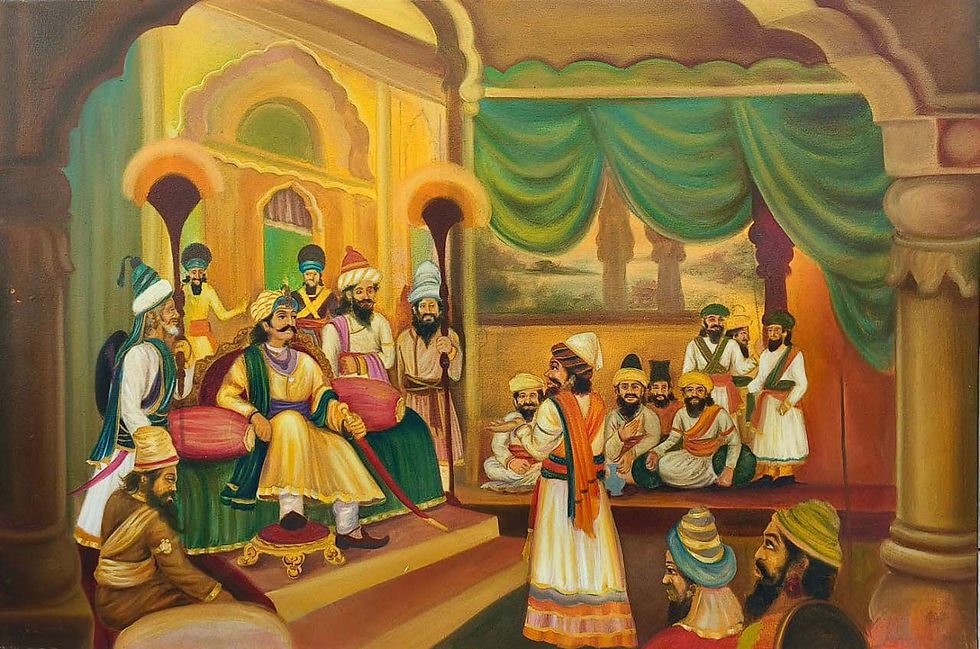
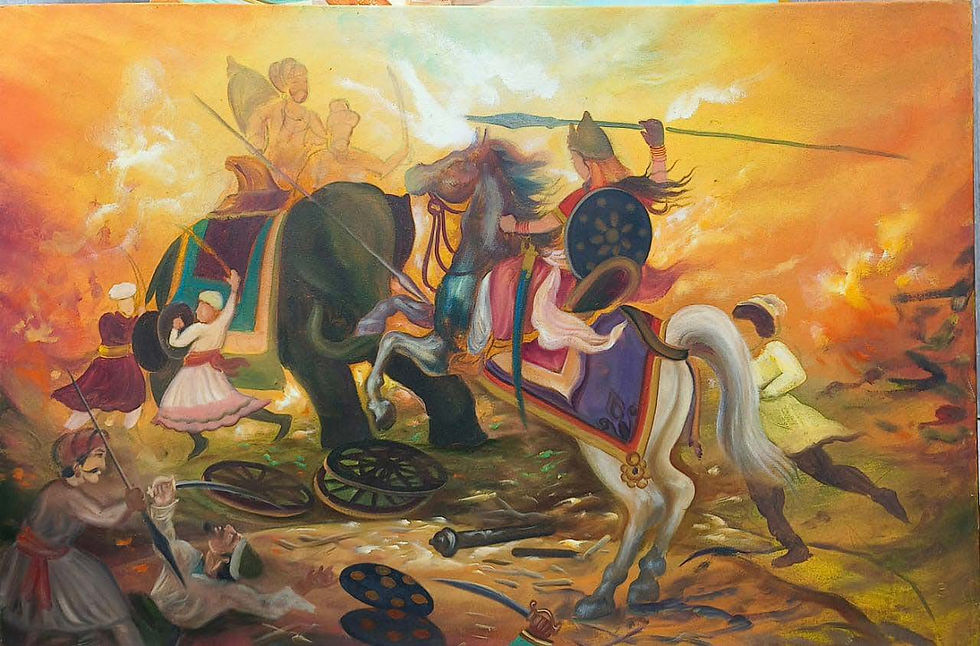
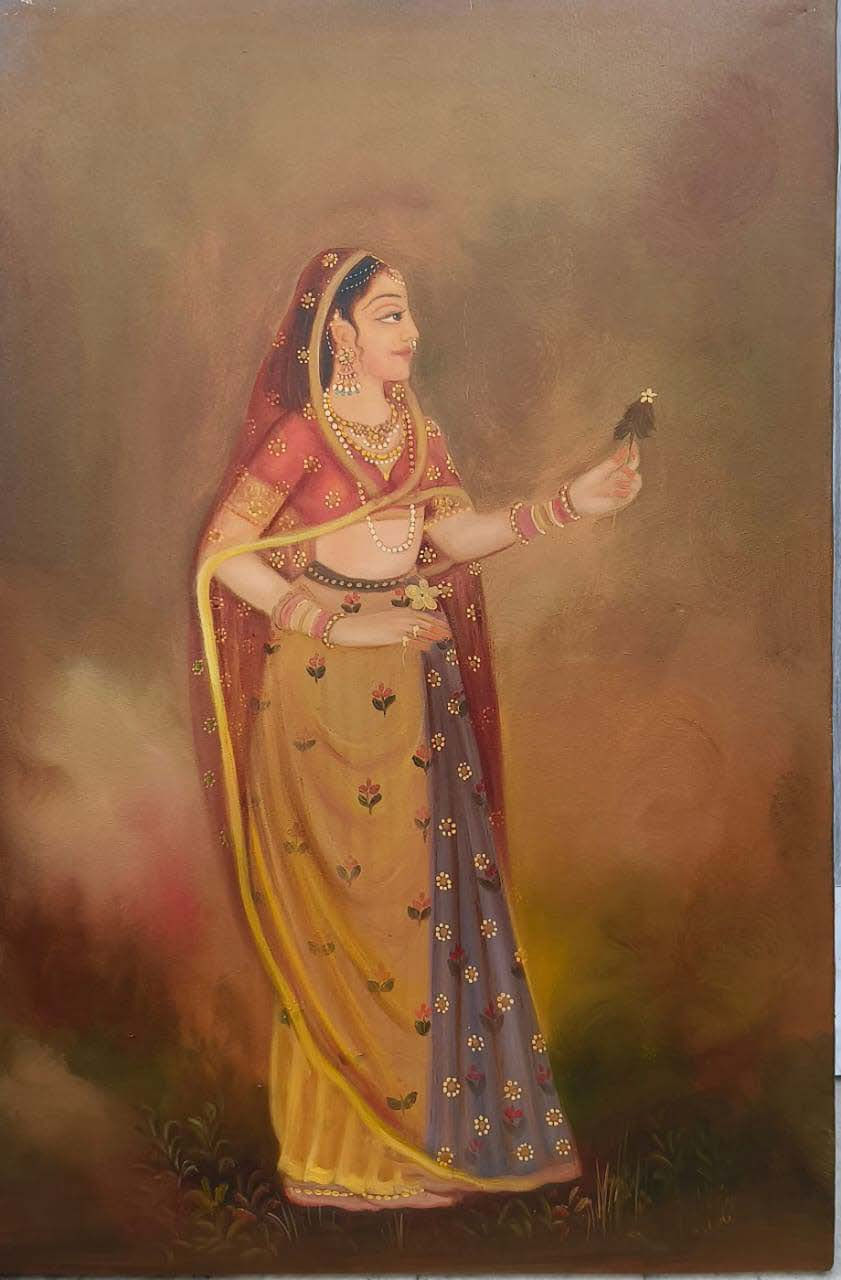

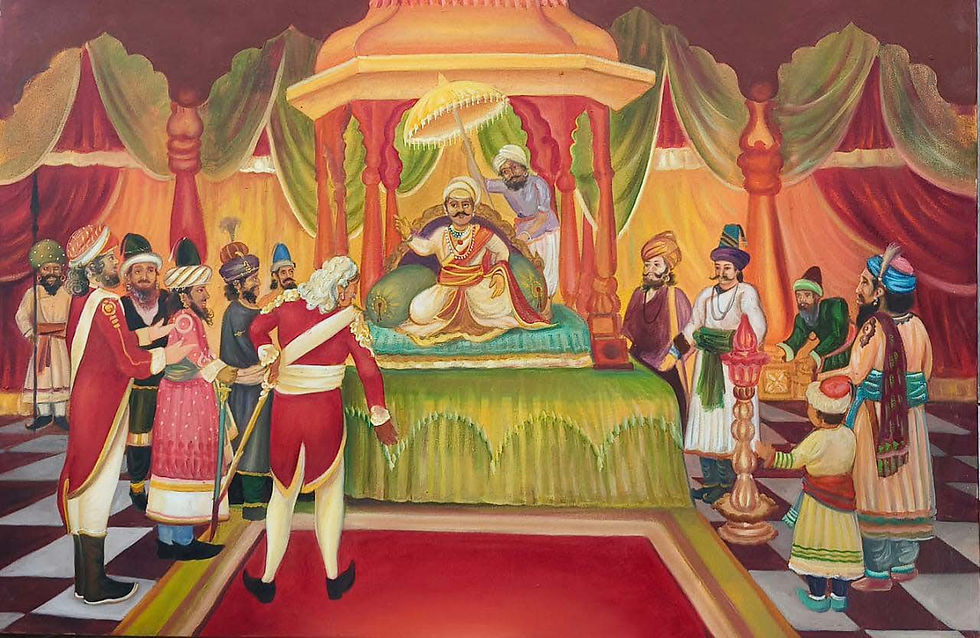
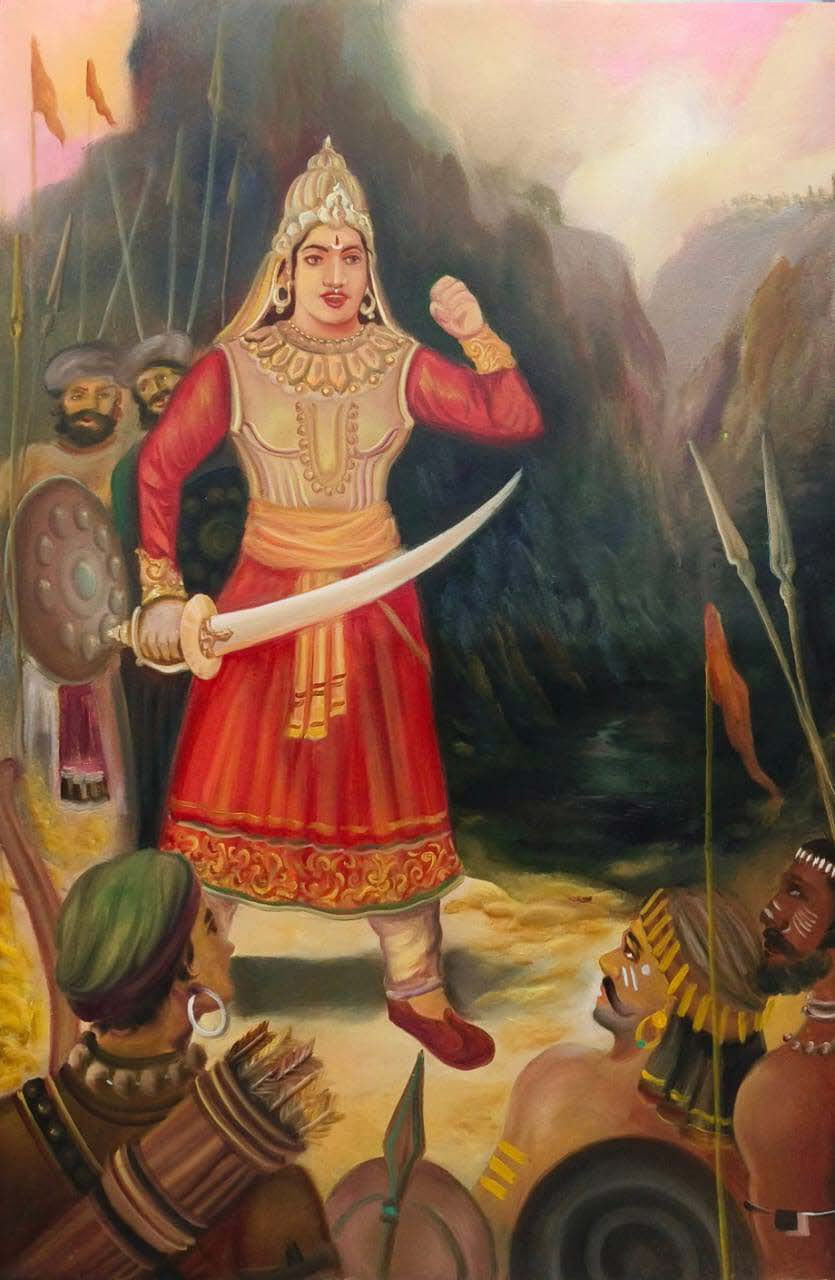
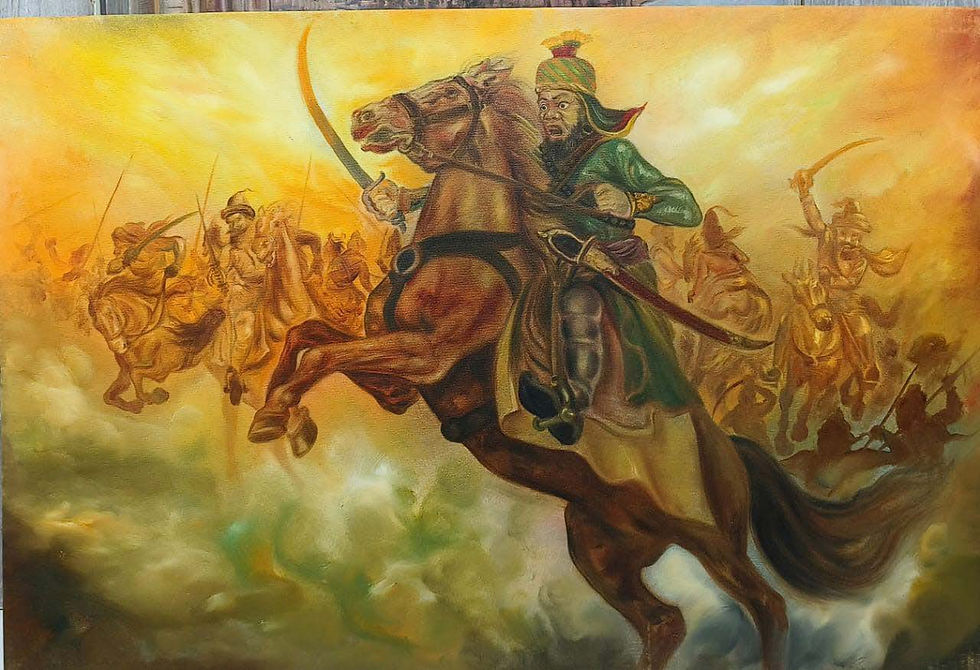

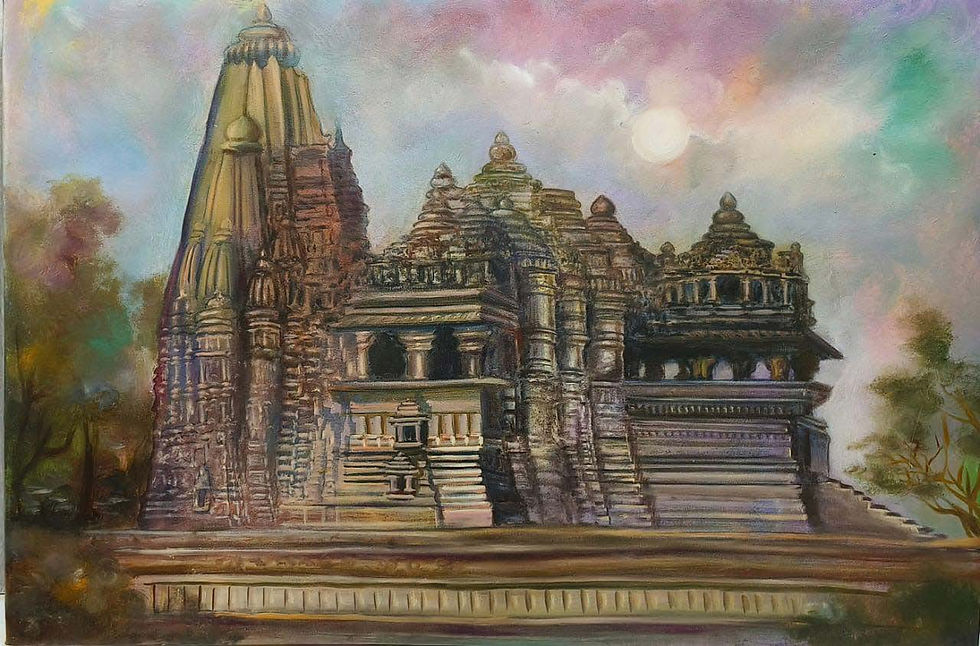

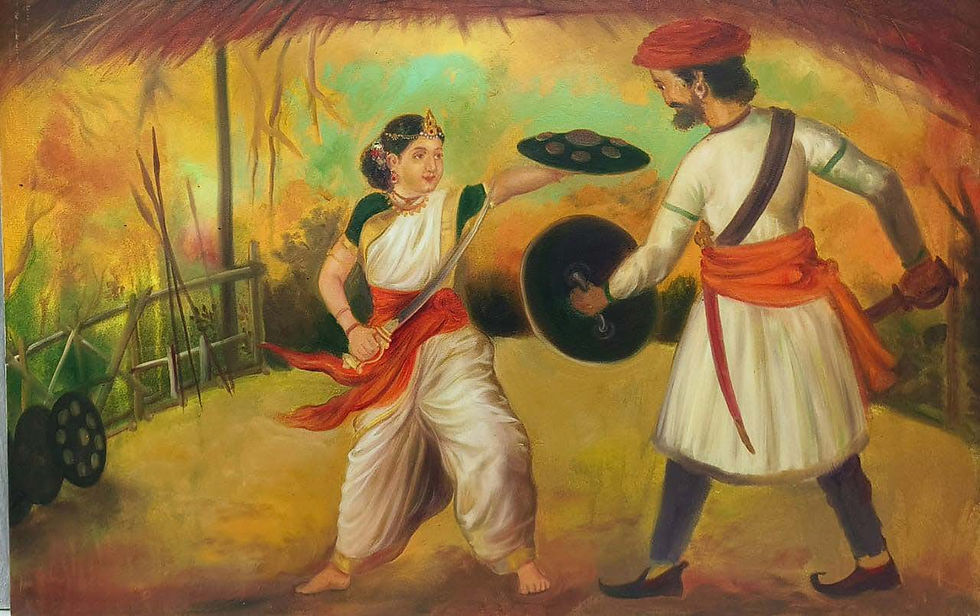
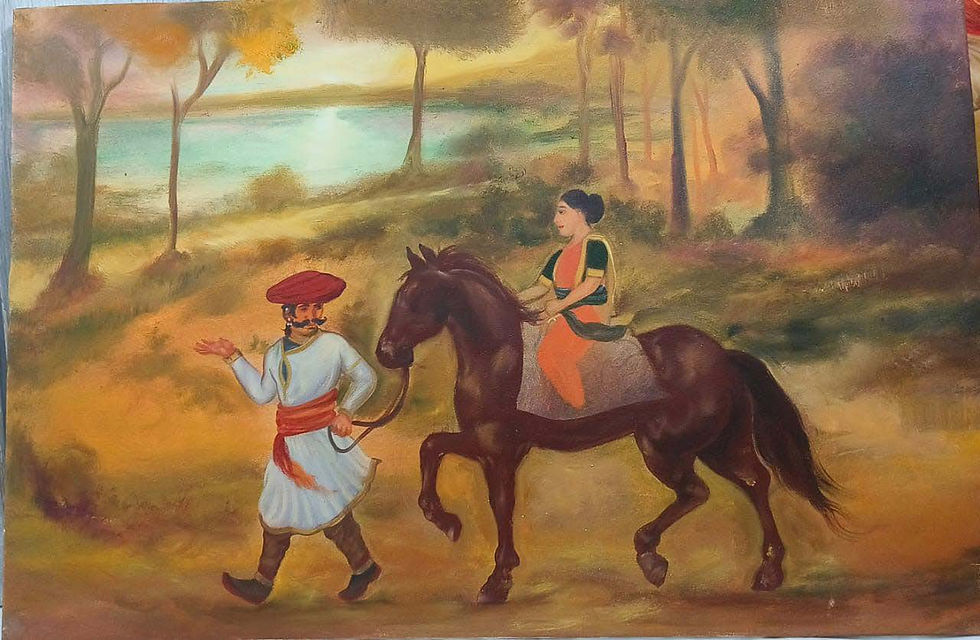
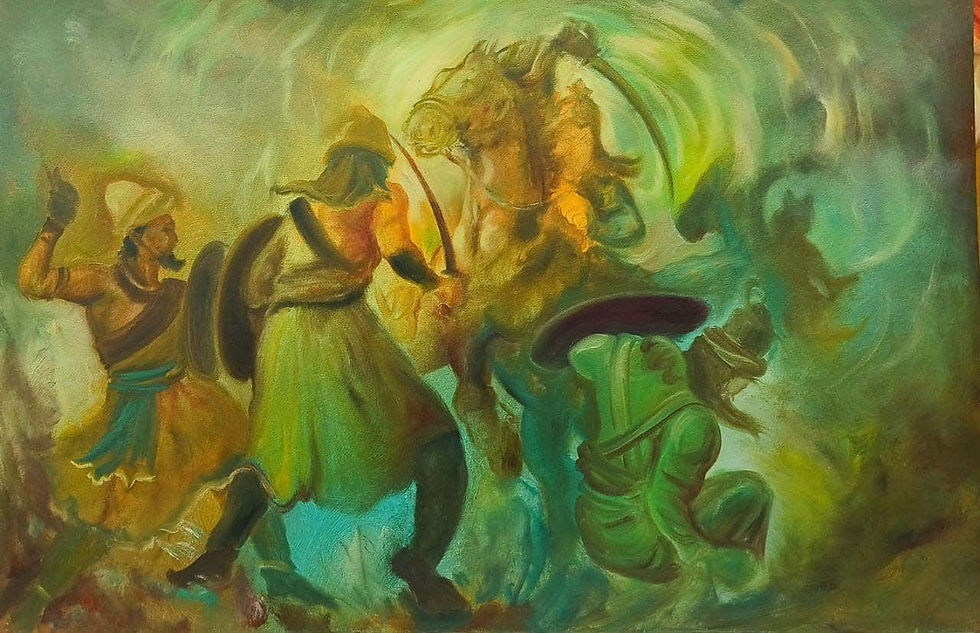


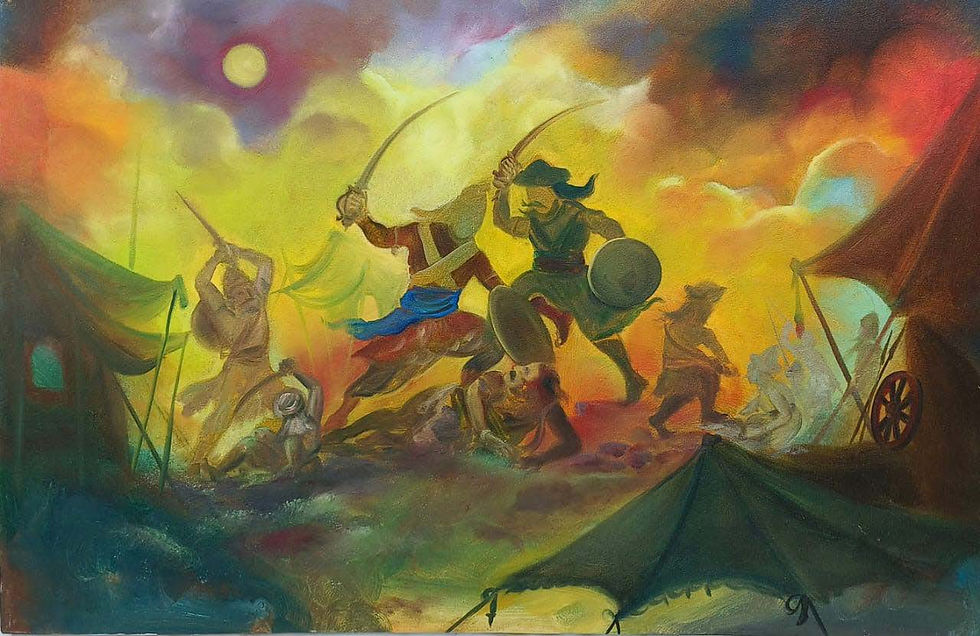
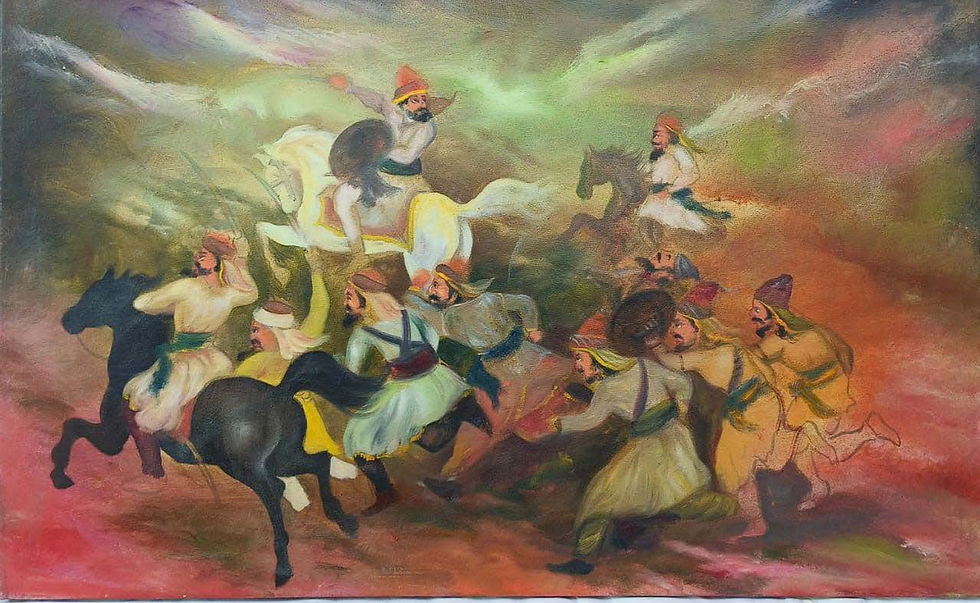

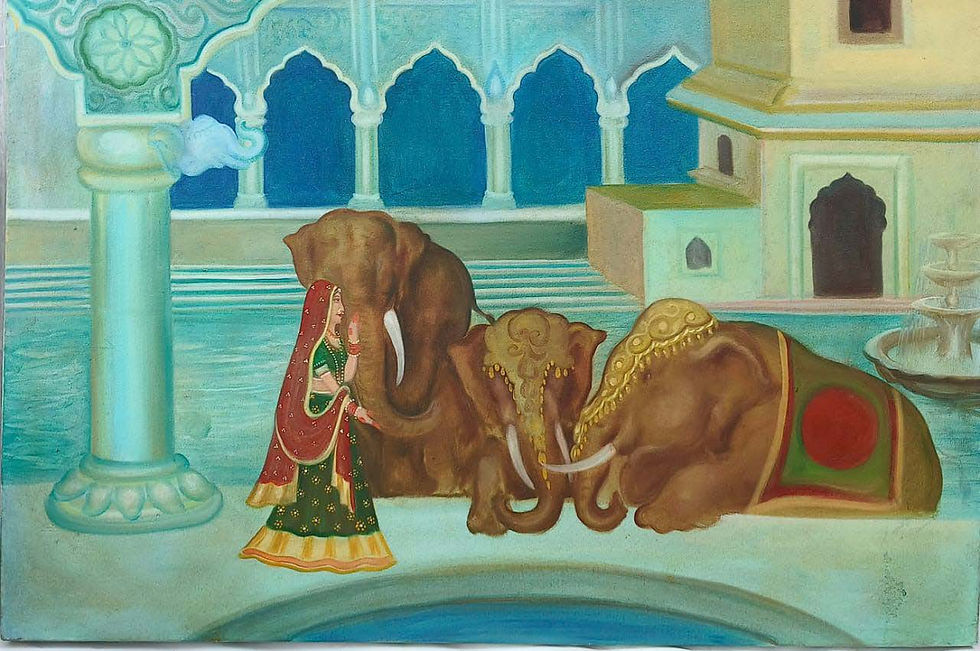

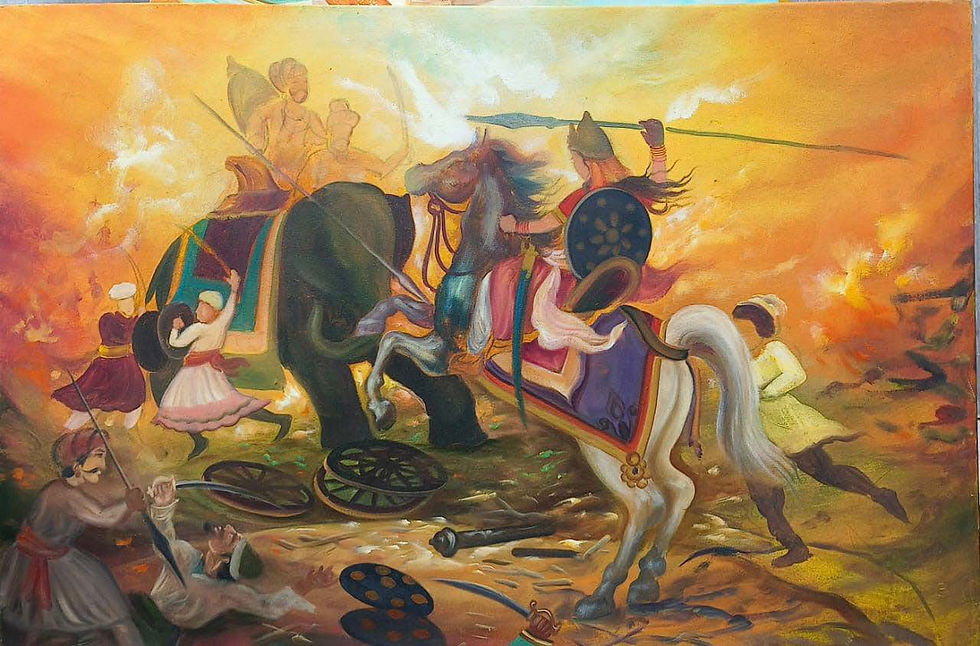
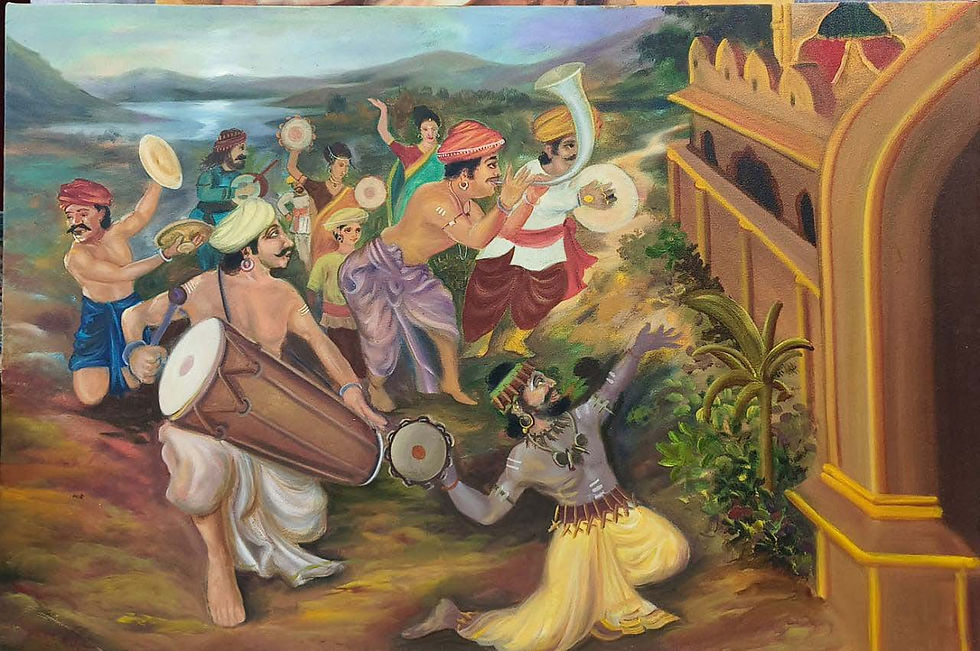
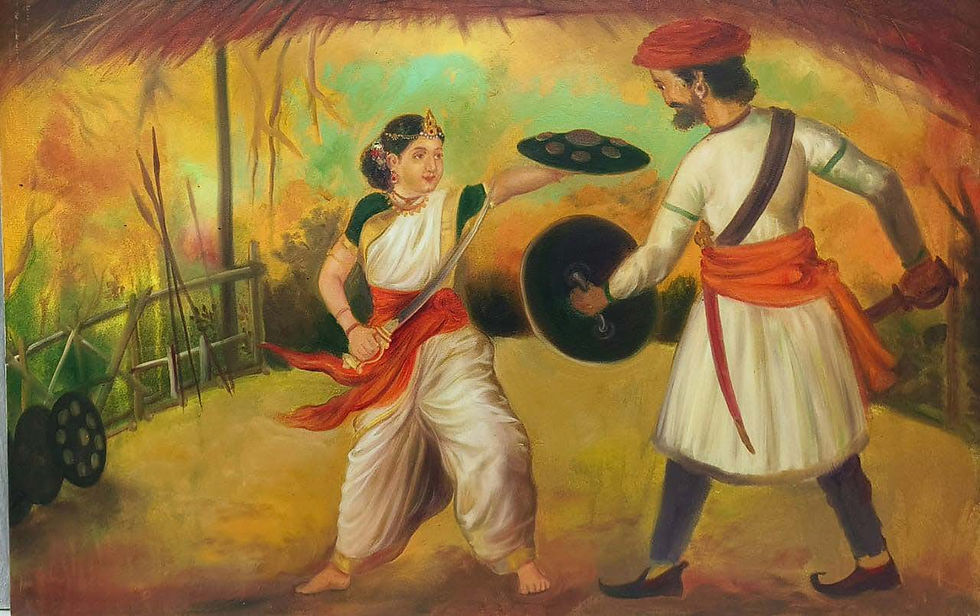







Comments